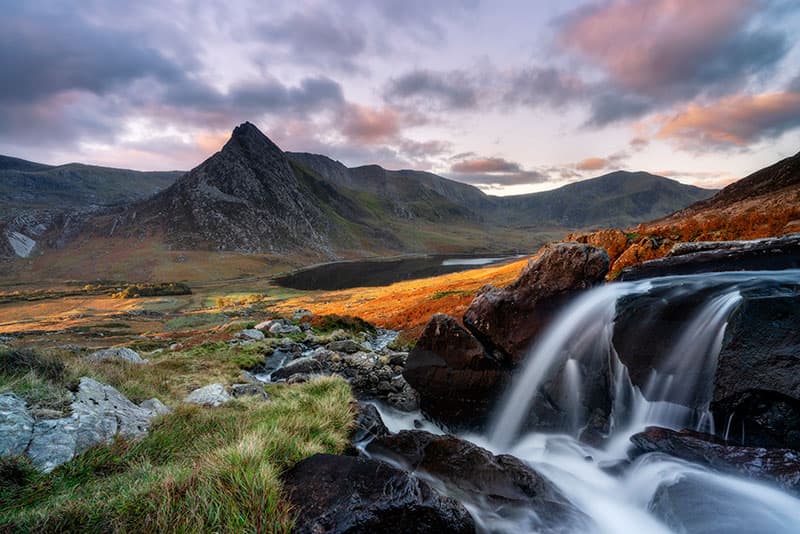
Looking out over Tryfan and the Ogwen Valley at sunrise on an autumn morning. Sony A7R III, 16-35mm, 5sec at f/13, ISO 100. Credit: James Abbott
There comes a time in every landscape photographer’s journey when they outgrow their local patch and feel the pull of more distance locations. While having local spots to visit is essential to take advantage of last-minute weather conditions, travelling further afield will take you to amazing places that expand both your portfolio and your creativity.
The world is full of famous locations, and there are some that are so popular you’re unlikely to ever have them to yourself at the optimum shooting time. The lone tree at Llyn Padarn in Llanberis, Wales, is one such location, and on a typical sunrise you can expect anywhere between four and 20 photographers to be lined up along the lakeshore. One reason for this could be simply that it’s a truly iconic sunrise location, but the fact that you can park just a 30-second walk away from the tree has to be a significant factor in its popularity.

Sunrise at the lone tree on Llyn Padarn. Credit: James Abbott
Finding locations
Finding famous and indeed lesser-known locations is easier than ever before, thanks to the internet and social media apps such as Instagram, where many photographers tag the locations of their images. The simplest way to discover new locations is to perform an internet search; you’ll find blogs, outdoor/walking websites and sites such as ShotHotspot, which is a user-fed location-finding website.
Another option is to perform an image search based on a location or area, and while this may not necessarily show you great images, it could still provide inspiration and links to useful websites.
As photography increases in popularity, there are more and more location guidebooks being published, covering much of the UK and further afield. The publisher fotoVUE and photographer Ellen Bowness (whose books are published by Long Valley Books) produce the best location guidebooks available and provide an excellent starting point for exploring the UK with your camera.
It’s safe to say that any location that you can find in a book, on a website or when using a search engine is popular to varying degrees. If you can find reference to a place, you can be almost sure that you’re not the first person to discover it. So if you’d prefer to discover more unique images, the only way to do it is to simply go out for a walk in an area that’s known for the type of landscape you’re interested in capturing.
You could use famous spots as a starting point, certainly, but do aim to take yourself away from the beaten track. And don’t forget to look behind you as well – sometimes the best shot can be found looking the other way. Not to mention, good old-fashioned luck should never be underestimated, and word of mouth can be invaluable.
One of the easiest aspects of landscape photography is arguably finding locations before you head out, thanks to guidebooks, maps and a range of websites. But finding the location itself for the first time may not be quite as easy, especially when you’re racing against the clock to be ready for sunrise or sunset.
Photography location guidebooks provide detailed directions, and often basic maps, to help you to find locations. But when it’s dark, particularly before sunrise, it can be difficult to identify key markers of the route and navigate successfully using the guide alone. So how do you ensure that you’re on track?
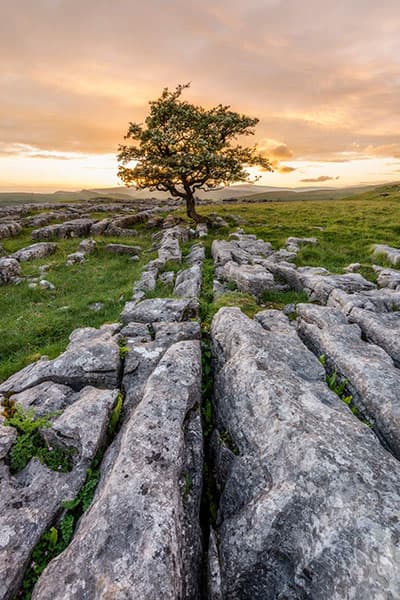
Winskill Stones in the Yorkshire Dales at sunset. Credit: James Abbott
Navigation on location
The best way to learn the route to a location that’s hidden away is to do a daytime recce before you intend to shoot. This way you’ll be able to see clearly and will be able to learn the route with ease. Of course, this isn’t always possible because of time constraints, so you may have to simply arrive with extra time to spare and take a risk.
To mitigate the risk, it pays to plot a route using a paper or digital map service when you’re at home, so you have at least some idea of the lay of the land and where you need to be heading. An even better option, however, is to do this and to have a paper map or a digital map app on your smartphone or a smartwatch with mapping or even a dedicated GPS mapping device. Just be sure that you download offline maps when using a smartphone app such as OS Maps Premium or ViewRanger, to ensure mapping and navigation will continue in the absence of a mobile internet connection.
With these apps and devices, you can often plot routes before heading out and use live GPS to determine your position in relation to the planned route. An alternative is to download a GPX file from walking/hiking websites if one is available for your chosen location. A GPX file is simply a file format that stores recorded or created routes that can then be loaded into mapping apps and GPS devices, and will sit on the map when loaded so you can follow the route.

Long exposure at the Fairy Glen near Betws-y-Coed, Snowdonia. Credit: James Abbott
Essential apps for landscape photographers
- The Photographer’s Ephemeris This is an app that can be used to plan shoots using Google Maps and sunrise and sunset guides so you know exactly where the sun will be positioned in relation to any location on earth. PhotoPills is a similar app, but offers much more functionality and is slightly more complicated to use.
- Met Office The Met Office is one of many weather apps available to help you plan shoots according to weather conditions. The app provides an hourly breakdown of the weather on the day, with a five-day forecast available for advance planning. While no weather report is 100% reliable, it’s always best to check.
- OS Maps Premium The OS Maps app can be used for free, but to use offline maps that can be accessed whether or not you have a phone signal requires an OS Maps Premium subscription. This allows you to download the maps you need with the ability to import GPX files and load them into maps so you can follow the route it contains.
Tip: conserve battery
When using GPS mapping on your smartphone the battery will drain much faster than usual, so it’s worth turning o GPS and checking your location every 15 minutes or so.
At some point or another, every landscape photographer will experience sunrises and sunsets that simply don’t deliver despite meticulous location and weather planning. Nature plays by its own rules, and luck will always be a large part of the overall equation with a fine line dividing great images and those that end up getting deleted.

Misty sunrise in the Dee Valley above Llangollen, Wales. Sony A7R III, 16-35mm, 61sec at f/13, ISO 100. Credit: James Abbot
Respond to conditions
Weather and light are the most common make-or-break factors for landscape photography, so it’s important to pay attention to the weather in the run-up to your planned shoot. The location in the image above was spotted during a shoot from a lower position the previous morning when the light was dull and the sky full of cloud.
That evening, the conditions and the weather report were suggesting that mist in the valley was highly likely, so I had to make a second visit. On the drive to the location it was hard to tell whether the mist had entered the valley, but once on the road leading to the parking area the sky began to erupt with colour and the mist became visible. The result was a unique image, in the best possible conditions, of a location that’s not particularly well known.
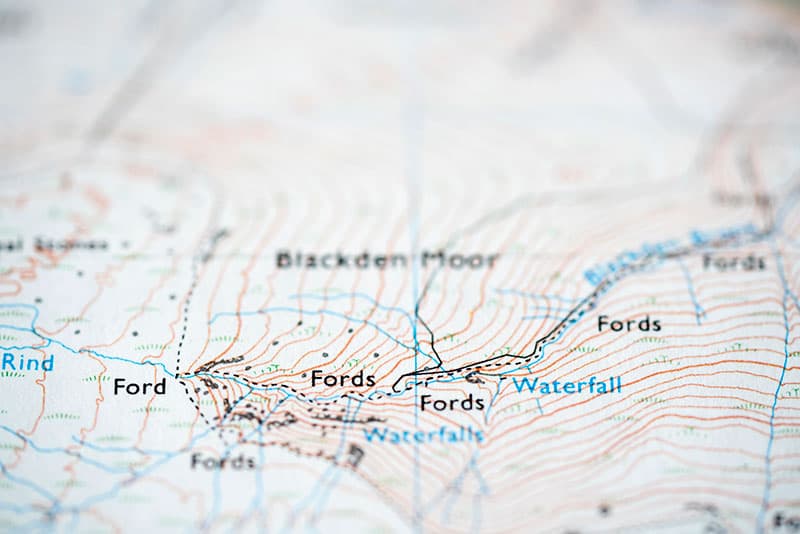
Credit: James Abbott
Discover hidden gems
Traditional paper maps are a fantastic way to discover locations that aren’t well known, and they provide an excellent method of navigation when paired with a compass on location.
Simply scour the map for your preferred landscape feature, such as a waterfall, and look for public rights of way to check access without trespassing. Pay attention to the contours of the landscape to be sure you’re physically able to reach it, and that it’s safe. Google Maps in satellite view is a great secondary method of assessment.
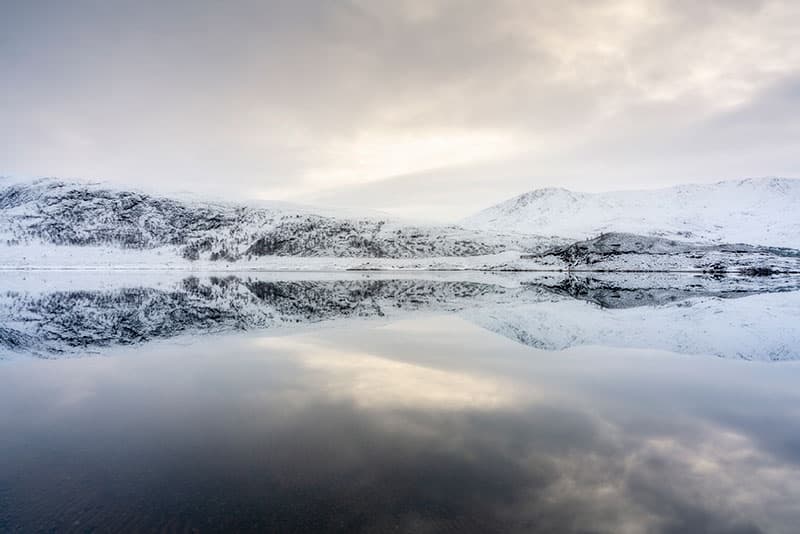
Perfect winter reflection at Loch Cluanie in the Scottish Highlands. Sony A7R III, 16-35mm, 2.5sec at f/13, ISO 50. Credit: James Abbott
Identifying a great find
There may be a number of occasions where you stumble upon a great location when the conditions are perfect, so you stop and take a few shots before continuing with your journey. In this situation, you may not know exactly where you are, but for landscape photography location is important.
On a recent trip to Scotland this happened when driving through the Scottish Highlands; the conditions on a loch were absolutely stunning and a stop off was in order to take advantage of mirror-perfect reflections and cloud in the valley. After taking a number of images, I used the ViewRanger app, with offline maps already downloaded, to identify the name of the loch using GPS to pinpoint the exact location so I could return to the location.
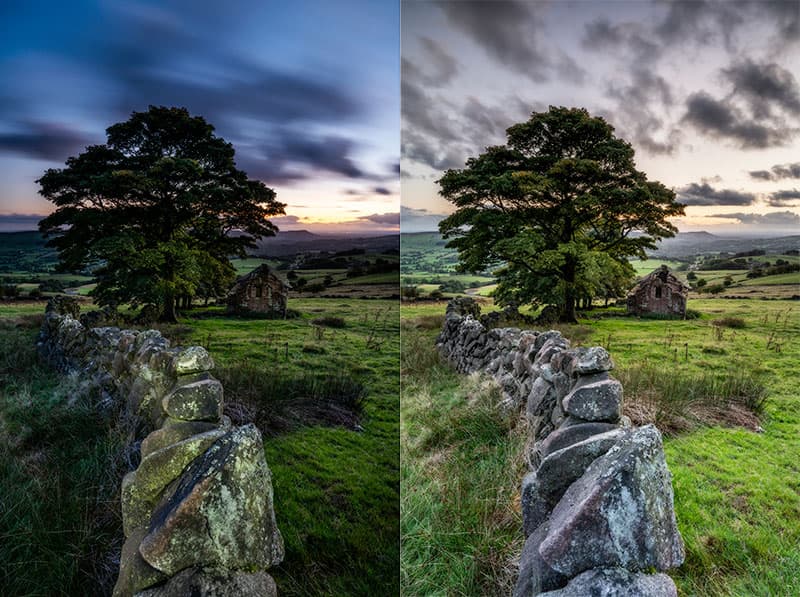
Roach End Barn at sunset (right) and same location at dusk (left) using a long exposure and light painting. Credit: James Abbott
Revisit locations
Even when you have a great image of a location, whether it’s lesser known or as famous as somewhere like Durdle Door, it’s always worth revisiting in different conditions even if you happen to shoot a great image on your first visit. Variances in light, weather and the colour of foliage can make a huge difference despite the location remaining the same.
Kit list
- Paper maps Even though many walkers and mountaineers now use digital mapping, a traditional paper map is essential in case of an emergency in more remote locations.
- Compass When using paper maps, you’ll also need to have a traditional compass to aid in pinpointing your exact location and help you stay on track.
- GPS device Digital mapping devices include smartwatches and standalone GPS devices; mapping phone apps make precise navigation a breeze.
- Photo guidebooks Photography location guidebooks are a great way to learn how to find both lesser-known and well-known locations in the UK and abroad.








